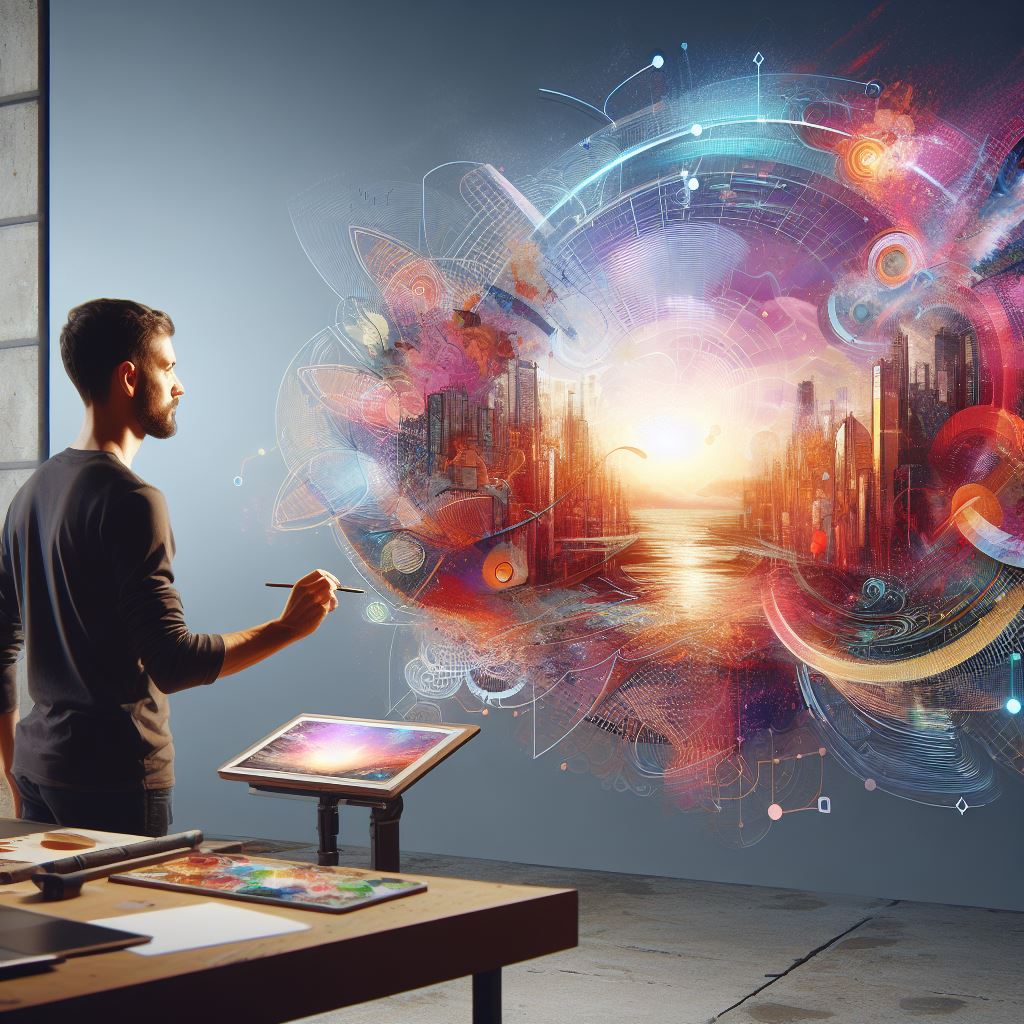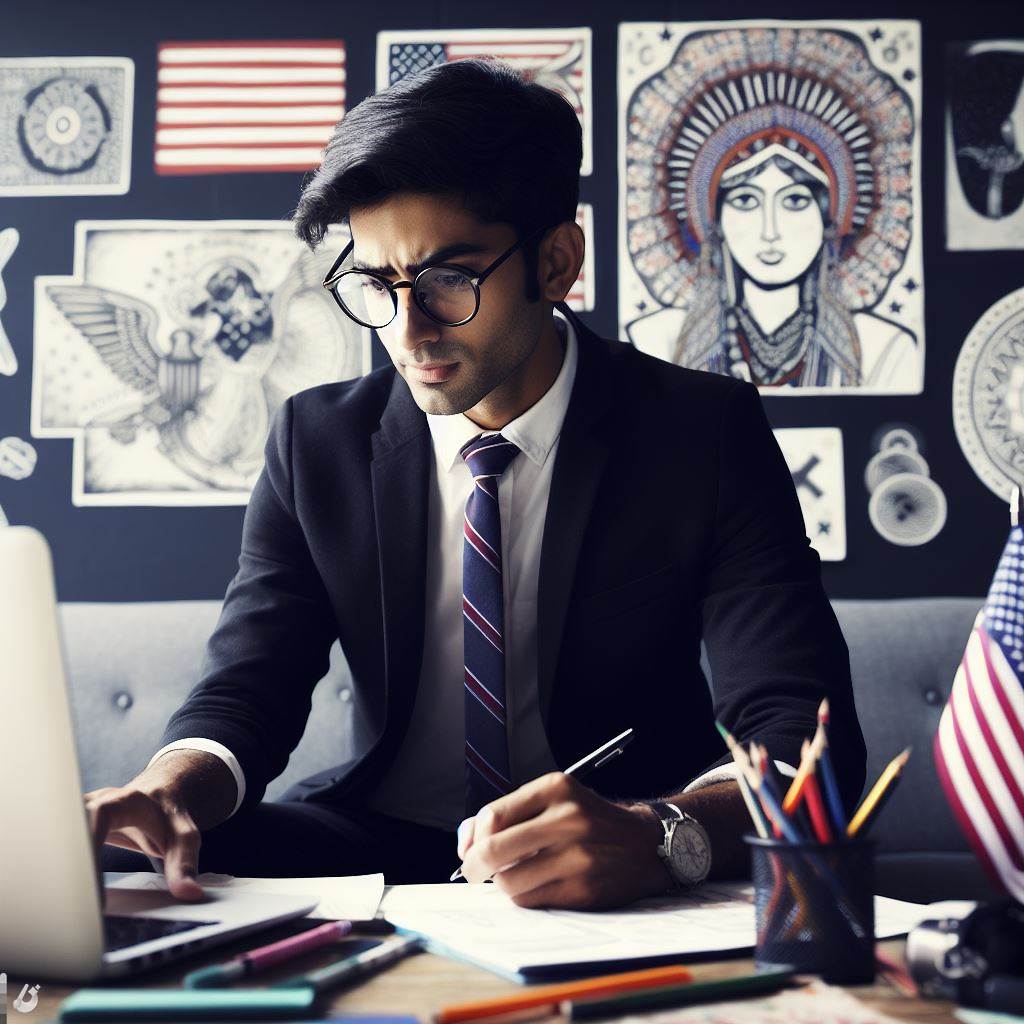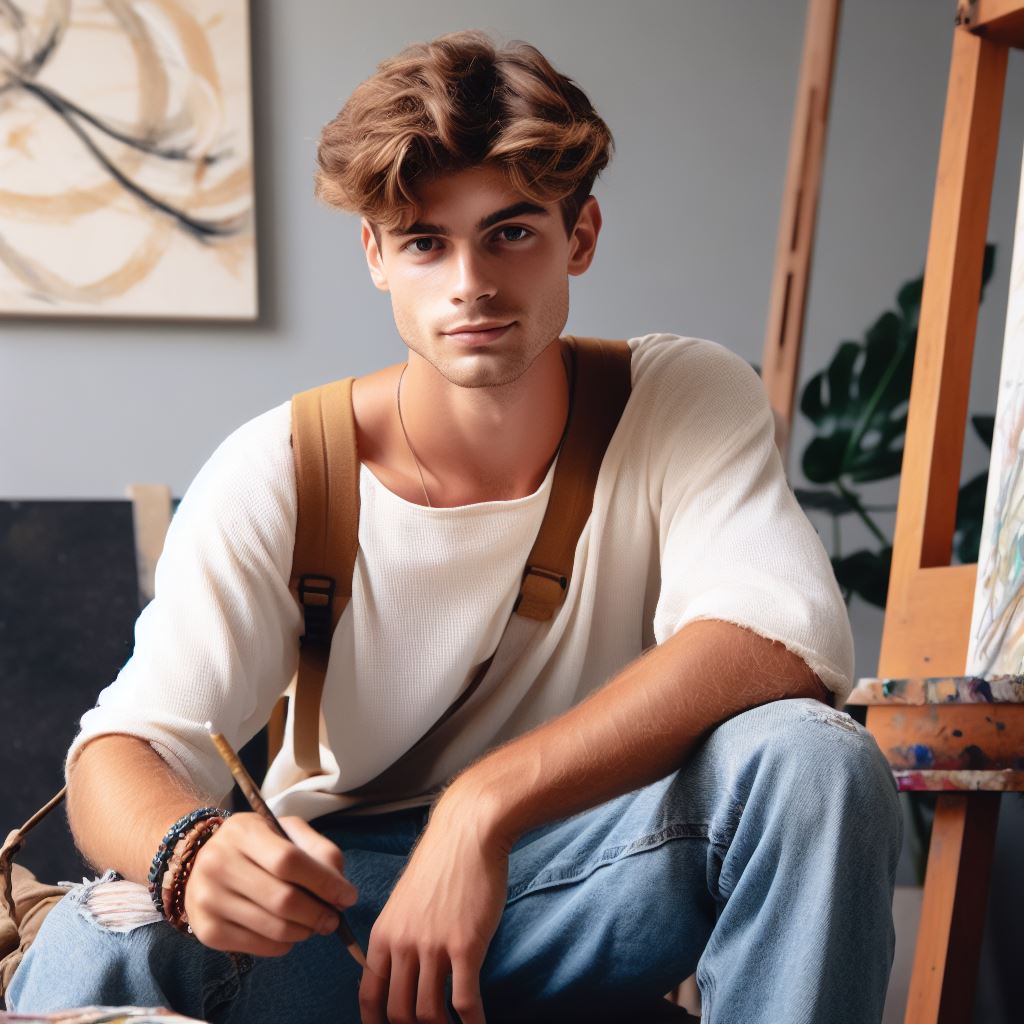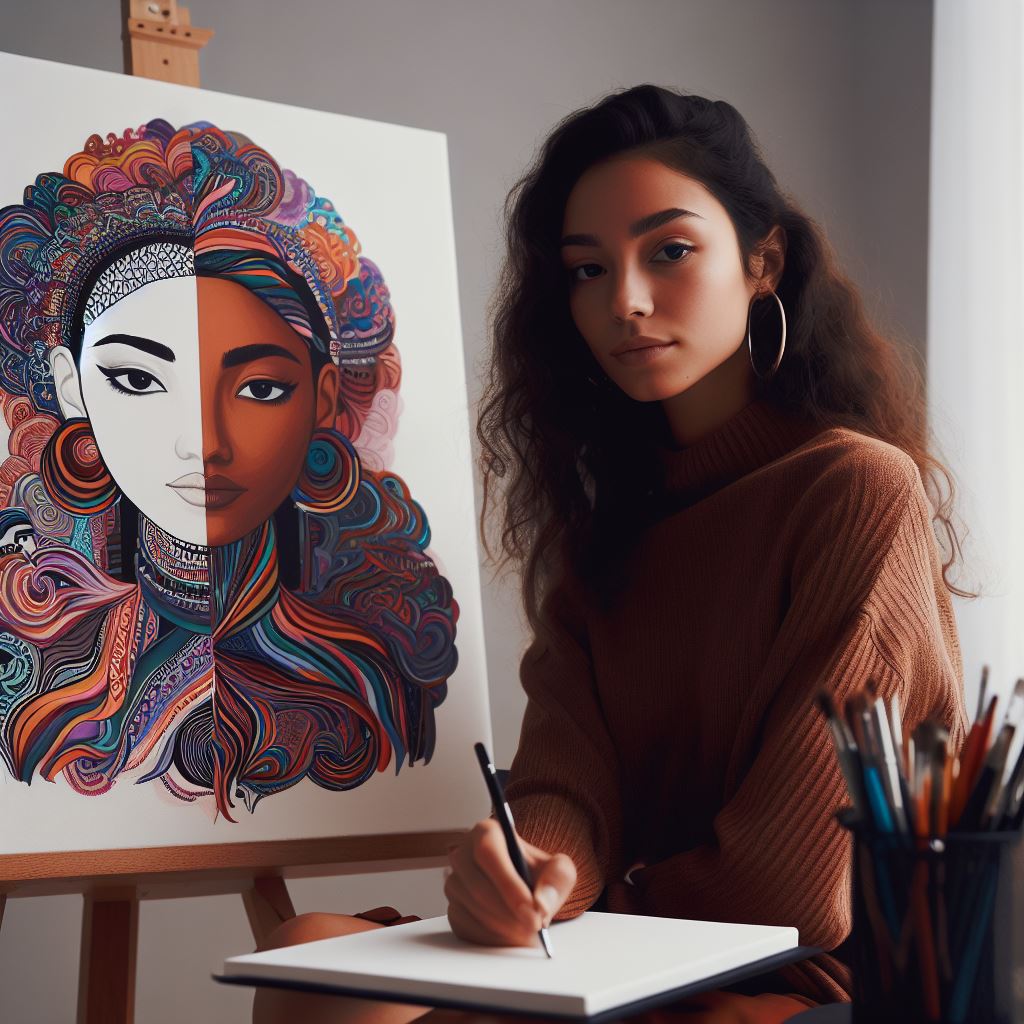Introduction
Importance of Discussing the Future of Artistry
Exploring the future of artistry is crucial as the art world undergoes dynamic shifts, demanding adaptability and innovation.
Impact of Digital Trends on the US Art World
Digital trends are revolutionizing the US art scene, reshaping how artists create, connect, and engage with audiences.
In an era dominated by technology, understanding the transformative impact of digital trends is paramount for artists and enthusiasts alike.
From augmented reality installations to blockchain in art transactions, these trends redefine traditional boundaries, offering new avenues for creativity and commerce.
This section delves into the evolving landscape, examining how digitalization influences artistic expression, market dynamics, and the overall trajectory of the US art world.
As we navigate this digital frontier, it becomes evident that embracing and comprehending these trends is not just beneficial but essential for artists aspiring to thrive in the evolving tapestry of American artistry.
Overview of the Current State of the US Art World
Statistics on the growth and significance of the art industry
- The art industry in the US has experienced significant growth, with the total market value reaching billions of dollars annually.
- According to a report by Art Basel and UBS, the global art market reached $64.1 billion in 2019, reflecting a steady increase over the years.
- The US continues to dominate the art market, accounting for the largest share of global sales, with galleries, museums, and art fairs attracting millions of visitors.
- The art industry has become an important contributor to the US economy, generating jobs and revenue for various sectors, including artists, galleries, auction houses, and tourism.
- The significance of art in society is evident as it provides cultural enrichment, promotes creativity and self-expression, and fosters dialogue and social engagement.
Traditional forms of art and their popularity
- Traditional forms of art, such as painting, sculpture, and photography, continue to have a strong presence in the US art world.
- Painting remains one of the most popular art forms, with artists using various techniques and mediums to create visually captivating works.
- Sculpture also holds a prominent place in the art world, with artists pushing the boundaries of traditional techniques and materials to create innovative and thought-provoking pieces.
- Photography has gained recognition as a legitimate form of art, challenging traditional notions of what constitutes an artwork and pushing the boundaries of creativity.
- These traditional art forms have a rich history and continue to captivate audiences through their ability to evoke emotions, tell stories, and provoke critical thinking.
Brief introduction to digital art and its emergence
- With technological advancements, the emergence of digital art has revolutionized the US art world, opening up new possibilities for artists and art enthusiasts.
- Digital art encompasses various mediums, including digital painting, interactive installations, virtual reality, and generative art created through algorithms.
- This form of art challenges the traditional notions of physicality, enabling artists to manipulate and create works using digital tools and platforms.
- Digital art offers opportunities for experimentation, interactivity, and the merging of different art forms, blurring the boundaries between art, technology, and design.
- It has gained recognition and validation within the art world, with dedicated exhibitions, festivals, and galleries showcasing digital artworks and attracting a new generation of art lovers.
- The accessibility and global reach of digital art have democratized the art world, allowing artists to connect with a wider audience and fostering online communities.
- However, digital art also poses challenges, including issues of provenance, preservation, and authenticity, as works can be easily reproduced and manipulated.
In general, the US art world is experiencing significant growth and transformation with the emergence of digital art.
Traditional forms of art continue to be popular and influential, while digital art offers new opportunities for innovation and creativity.
The art industry’s contribution to the economy and society remains significant, enriching cultural experiences and fostering social engagement.
The future of artistry in the US will likely be shaped by a harmonious integration of traditional and digital art forms, as artists and audiences embrace technological advancements and explore new artistic possibilities.
Read: Top Interior Design Schools in the United States
Digital Trends Influencing the Future of Artistry
Rise of virtual reality (VR) and its impact on art experiences
1. VR exhibitions and immersive art installations
The rise of virtual reality technology has revolutionized the way art is experienced.
VR exhibitions and immersive art installations allow viewers to step into a virtual world where they can interact with art in unprecedented ways.
This immersive experience enhances the emotional and sensory impact of the artwork, creating a deeper connection between the viewer and the artist’s vision.
2. Opportunities for artists to push boundaries and engage audiences
Virtual reality offers artists a new medium to explore and experiment with. It allows them to push boundaries, challenge traditional artistic conventions, and create interactive experiences that engage audiences on a whole new level.
Artists can now combine various art forms such as painting, sculpture, and animation, blurring the lines between different disciplines and creating truly unique and innovative artworks.
Expansion of digital platforms for art distribution
1. Online galleries and marketplaces
The digital age has opened up countless opportunities for artists to showcase and sell their work on online galleries and marketplaces.
These platforms provide a global audience with easy access to a wide range of artworks, breaking down geographical barriers and allowing artists to reach a larger customer base.
Artists can now sell their creations directly to collectors, bypassing traditional intermediaries and retaining greater control over their artistic careers.
2. Social media platforms as art promotion tools
Artists use Instagram, Facebook, and Twitter to promote work, share creative processes, and connect directly with their audience.
Transform Your Career Today
Unlock a personalized career strategy that drives real results. Get tailored advice and a roadmap designed just for you.
Start NowThrough social media, artists gain exposure, build an online presence, and foster a sense of community with followers.
Utilization of artificial intelligence (AI) in art creation
AI-generated art and its potential impact on the art market
The utilization of artificial intelligence in art creation has sparked a significant debate within the art world.
Algorithms and machine learning create AI-generated artworks, challenging traditional authorship notions and questioning art’s value and authenticity.
In the art market, AI-generated pieces achieve success, selling for millions, blurring the line between man and machine, redefining creativity.
The art world debates AI’s role. Some see it as a tool; others perceive it as a threat to creativity.
Machines creating art challenge our understanding, raising questions about human imagination and artistic expression.
Digital trends like virtual reality and AI shape US artistry. They offer new mediums, accessibility, and challenge traditional notions.
Technology’s advance urges artists to embrace and adapt to digital trends, potentially transforming the art world profoundly.
Read: Art Festivals & Fairs: Showcasing Talent Across the US

Advantages and Disadvantages of Digital Trends in the Art World
Benefits of digital trends
1. Increased accessibility and global reach for artists
The emergence of digital platforms has provided artists with a global audience and expanded their reach beyond traditional galleries and exhibitions.
2. Enhanced artistic possibilities and experimentation
Digital trends have opened up new avenues for artists to explore and experiment with different mediums, techniques, and styles, leading to innovative and boundary-pushing artwork.
Concerns and challenges accompanying digital trends
1. Preservation and limitations of digital art
Unlike physical artworks, digital art faces challenges in terms of preservation and long-term access.
Technological advancements may render digital art formats obsolete, making it difficult to ensure its longevity.
2. Ethical considerations regarding AI-generated art
The increasing use of artificial intelligence (AI) in creating art raises ethical questions surrounding authorship, originality, and the role of human creativity. Who should be credited as the artist when AI is involved?
Digital trends reshape art creation, exhibition, and experience, offering benefits but also posing concerns and challenges.
Increased accessibility through digital platforms broadens artists’ global reach, connecting them with diverse audiences, buyers, and fellow artists.
Digital trends unlock artistic possibilities, enabling exploration of new mediums, techniques, and styles previously unimaginable.
Tools and software foster endless creative potential, pushing traditional art boundaries.
However, preservation challenges emerge with digital art’s constant evolution. Formats become obsolete, risking the loss of the artist’s original intention.
Showcase Your Business Today
Reach thousands of readers actively exploring professional services. Publish your business profile and grow your audience now.
Publish NowEthical concerns arise with AI-generated art, challenging traditional notions of authorship and human creativity. Questions persist about crediting AI-involved creative processes.
In review, digital trends benefit the art world by enhancing accessibility, enabling artistic exploration, and connecting artists globally.
Challenges, including preservation and ethical considerations, necessitate ongoing adaptation and solutions for future growth.
Read: Cultural Impact: The Artist’s Role in American Society
Opportunities and Challenges for Artists
Expanding career paths in the digital art realm
- Artists now have opportunities in VR, digital marketing, and art curation, attracting a wider audience.
- Collaboration between artists and tech companies opens up new avenues for creativity and exposure.
Necessity for artists to adapt and acquire digital skills
The future holds both exciting opportunities and daunting challenges for artists in the US art world. With the advancement of technology, artists are now presented with expanding career paths in the digital art realm.
Artists find significant opportunities in virtual reality (VR). As VR gains popularity, artists can create immersive experiences attracting diverse audiences.
Digital marketing opens new career avenues. Artists leverage social media to promote and sell artwork globally, establishing direct connections.
Art curation in the digital realm offers enticing prospects. Online galleries allow artists to curate shows, breaking geographical barriers.
However, artists face the challenge of adapting to the digital landscape and acquiring technical proficiency.
Technical skills become crucial in creating digital art appealing to contemporary audiences. Artists must familiarize themselves with digital tools and techniques.
Yet, artists must balance traditional and digital practices. The fusion can result in unique and captivating artwork, appealing to diverse audiences.
Essentially, the US art world’s future is shaped by digital trends. Artists have opportunities in VR, digital marketing, and curation, but adapting to the digital landscape is crucial.
Embracing both traditional and digital practices enables artists to unleash their full creative potential.
Read: Surviving as a Freelance Artist in the American Gig Economy
Conclusion
Recap of Digital Trends Shaping the US Art World
Digital trends are transforming the US art scene rapidly. From online galleries to augmented reality installations, technology reshapes artistic landscapes.
Emphasis on the Importance of Embracing and Navigating These Trends
Embracing these trends is crucial. Artists navigating digital platforms find new avenues for exposure and collaboration. Adapting to evolving technologies ensures relevance in a dynamic art world.
Final Thoughts on the Potential Outlook for Artistry in the Digital Age
As we delve into the digital age, the potential for artistry is boundless. The fusion of creativity and technology propels the art world forward.
Embracing these changes is not just a choice but a necessity for artists aiming to thrive in the future. The digital canvas opens doors to global audiences, encouraging innovation and pushing artistic boundaries.
As the US art world undergoes this transformative journey, artists who seize the opportunities presented by digital trends are poised to redefine the landscape.
The future of artistry lies in the hands of those who not only create but also adapt, explore, and embrace the ever-evolving digital frontier.
[E-Books for Sale]
The Big Book of 500 High-Paying Jobs in America: Unlock Your Earning Potential
$19.99 • 500 High-Paying Jobs • 330 pages
Explore 500 high-paying jobs in America and learn how to boost your career, earn more, and achieve success!
See All 500 High-Paying Jobs of this E-Book
1001 Professions Without a Degree: High-Paying American Jobs You Can Start Now
$19.99 • 1001 Professions Without a Degree • 174 pages
Discover 1001 high-paying jobs without a degree! Unlock career tips, skills, and success strategies for just $19.99!




